
The Royal Way or the Royal Road (Královská cesta) is the name of the historical route in Prague, along which future Czech kings passed to the coronation, and today this path is a popular tourist route in Prague.
The route is also known as the Coronation Way, the Coronation Route, the Way of Kings, or the Route of Kings.
The tradition of the Royal Way was established by the Emperor Charles IV. King Albrecht II was the first to travel along the Royal Road in 1438, and Ferdinand I Dobrotivy was the last in 1836 (like the Hungarian and Czech king Ferdinand V).
Important envoys and guests from foreign countries also passed along the route, parades to the remains of the Habsburg monarchs, etc. Along the way, the route was decorated, and the procession stopped and met with representatives of guilds, schools, church orders, the army, representatives of all Prague town halls. Following the route was also accompanied by the sounds of bells, music and singing.
Today, the Royal Way is the main tourist route of the center of Prague, along which anyone can walk, while seeing and visiting some of the main attractions of the city.
The route passes through the historical part of Prague and leads from Republic Square to Prague Castle.

The route starts from the Republic Square (Namesti Republiky) - from the current A public house (Obecní dům), on the site of which there was previously a royal residence, called the "Royal Court" - a building from the time of Wenceslaus IV (about 1383).

Then the route leads to the Gothic arch The Powder Tower (Prašna brana), in the galley of which today there is an observation deck.
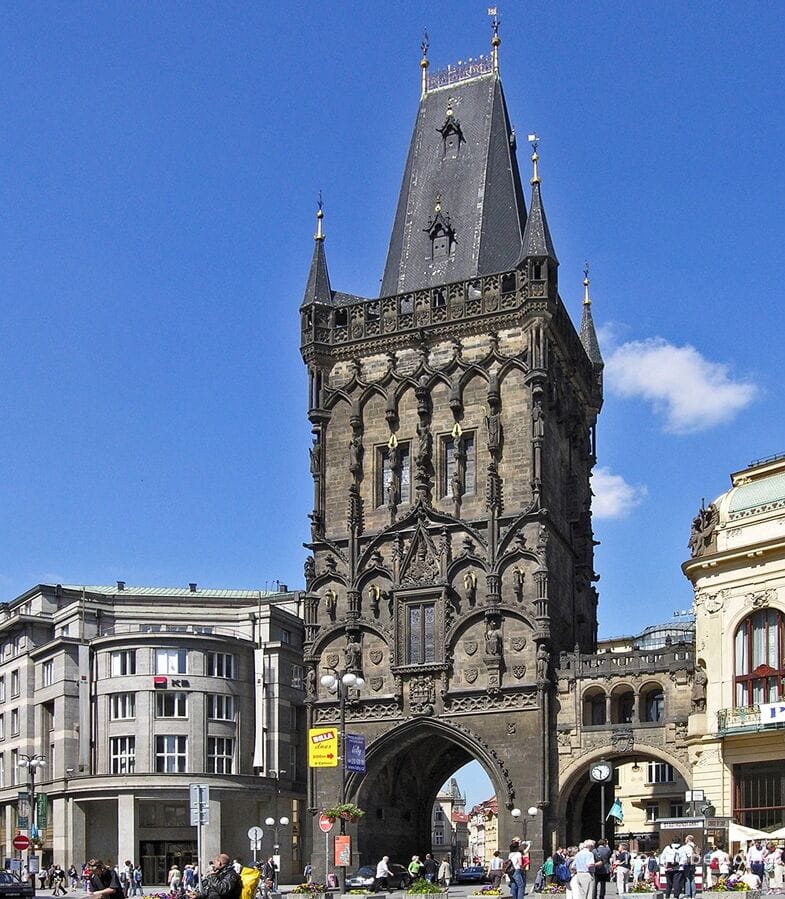
Then the path runs along Celetná ulice.
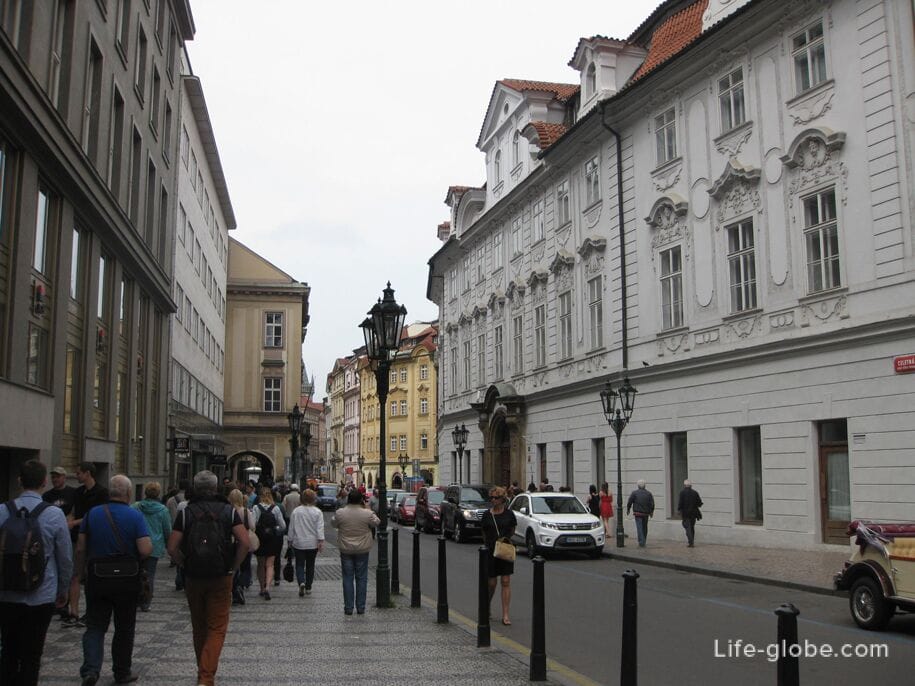
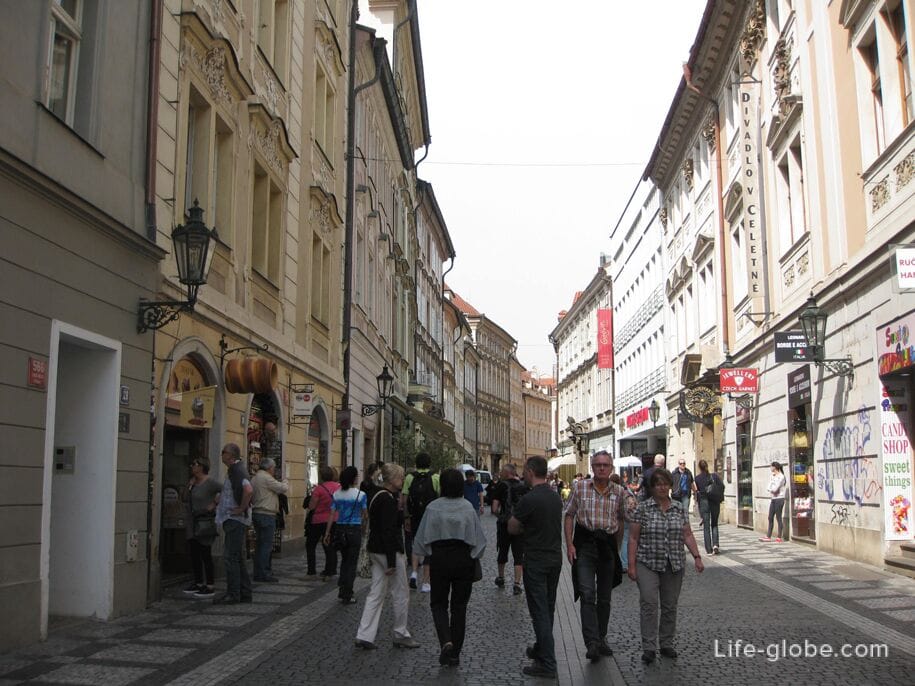
Then through Old Town Square (Staroměstske naměstí), which are notable: Old Town Hall (Staroměstska radnice) with Prazh astronomical clock (Prazsky Orloj or Staroměstský orloj) and observation deck in the tower, Tyn Church (Tynsky chram) and Church of St. Nicholas (Kostel sv. Mikuláše).
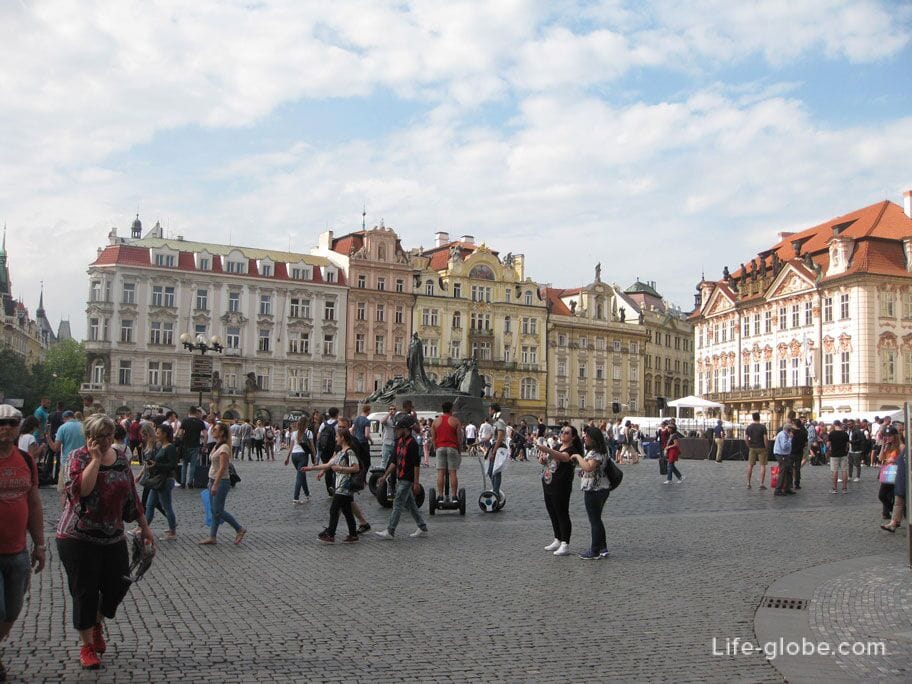


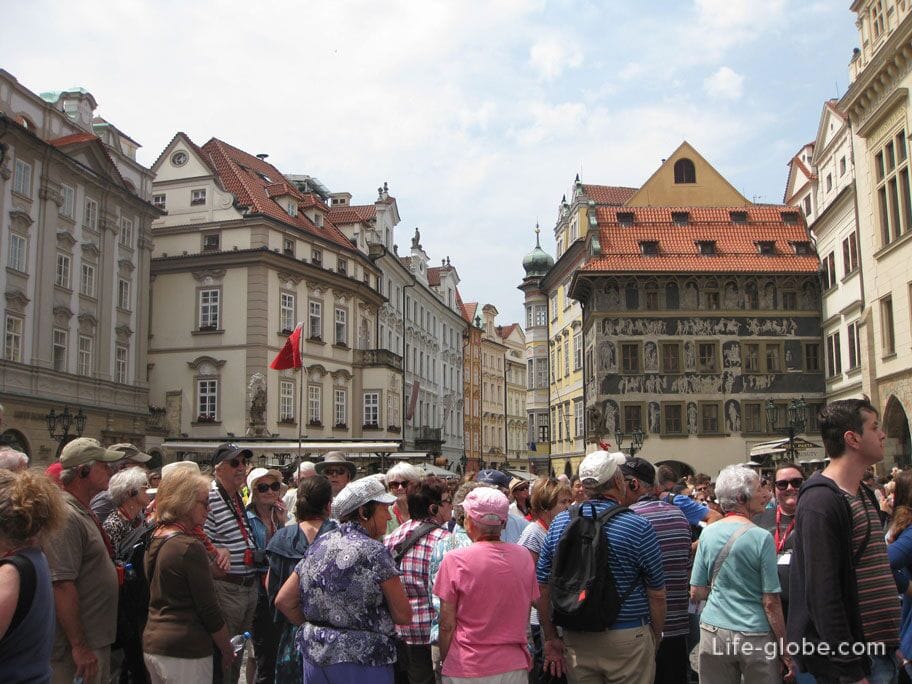
From the Old Town Square, the route through the charming A small square (Male naměstí) leads to Karlova street (Karlova ulice), near the historical complex Clementinum, which is notable for: St. Clement's Cathedral (Katedrala sv. Klimenta), a Baroque library hall (Barokní knihovna Klementinum), a Mirror Chapel (Zrcadlova kaple) and an observation deck in the tower.
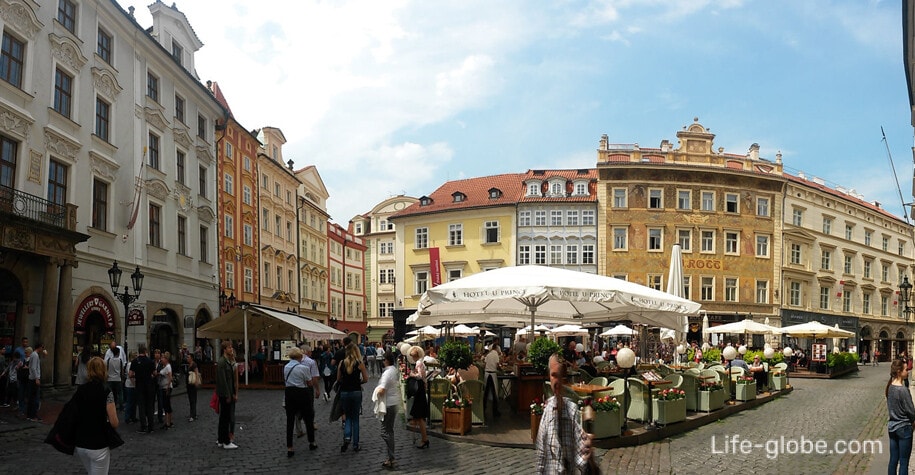
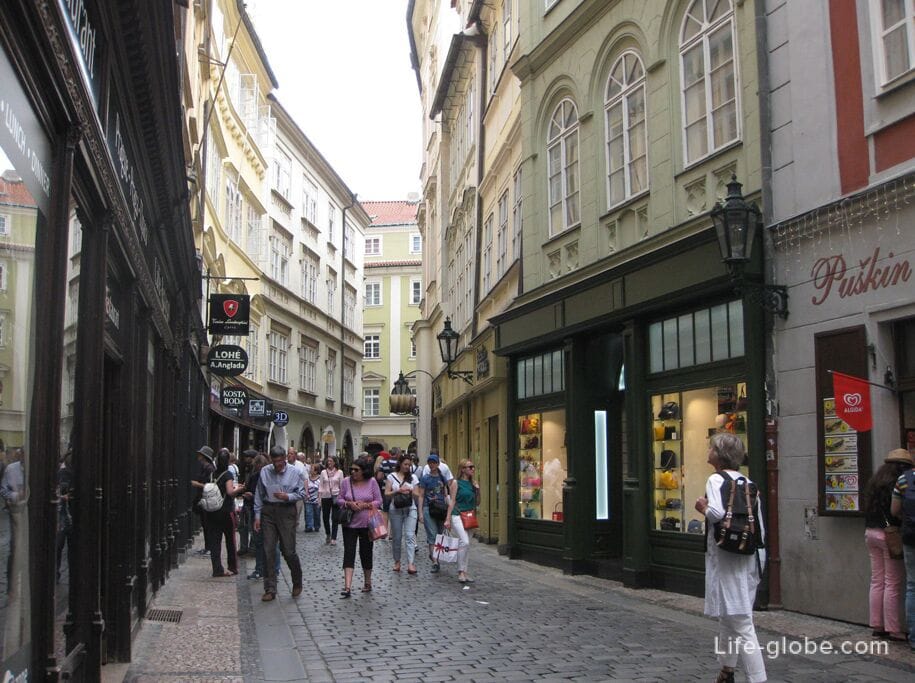
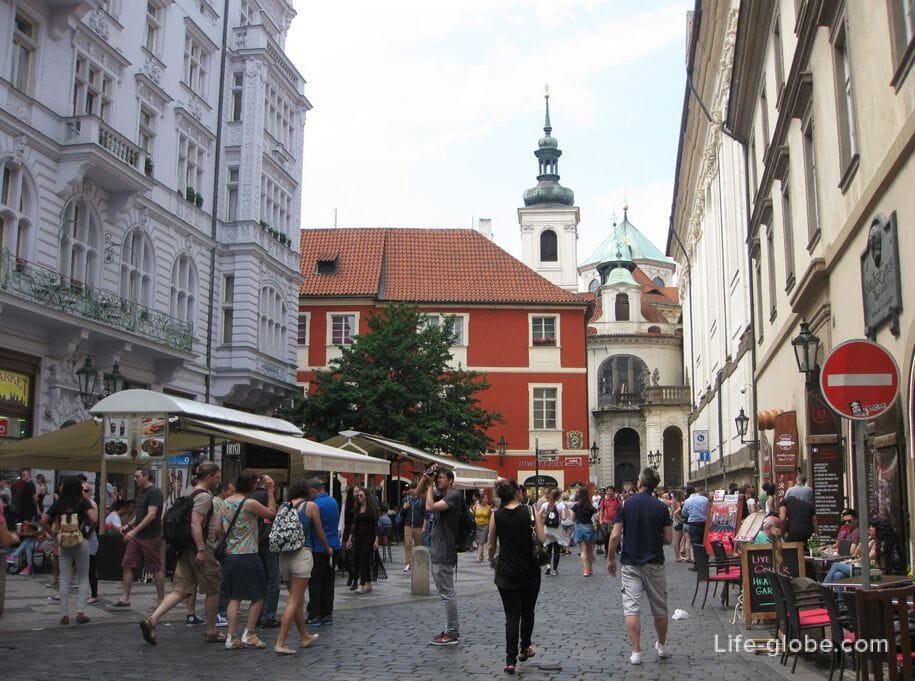

Karlova Street leads to the Crusaders Square (Křižovnicke naměstí), then through the arch under The Old Town Bridge Tower (Staroměstska mostecka věž) in the upper part of which there is an observation deck, the route leads along the famous Charles Bridge (Karlów most), at the end of which passes through the arch between Malostranska bridge towers (Malostranska mostecka věž), in one of which there is an observation deck.
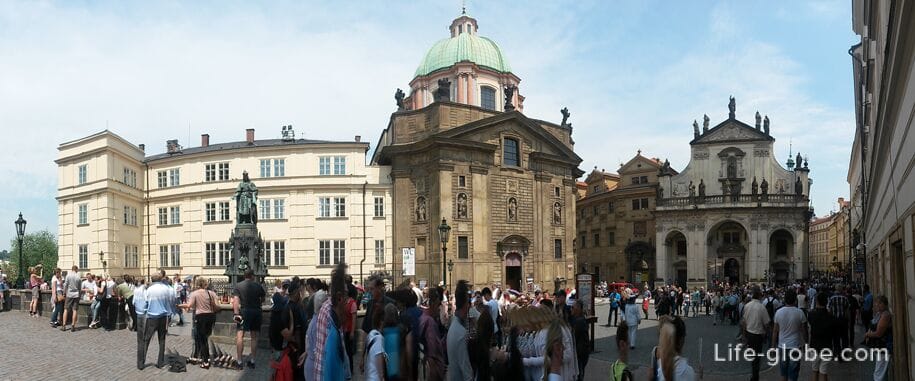
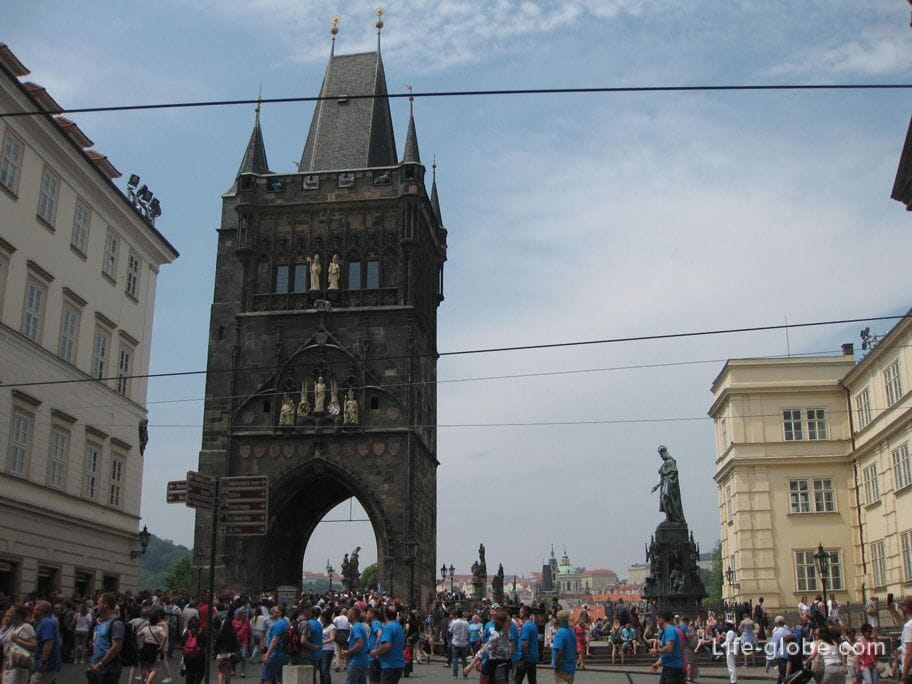
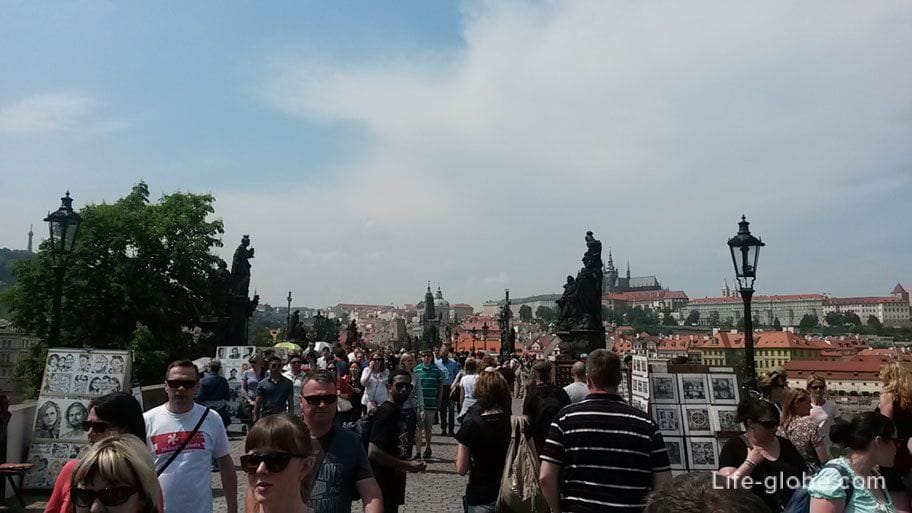


After that, the route runs along Mostecka Street (Mostecká ulice) to Malostranske Square (Malostranske naměstí), surrounded by historical buildings and palaces, and dominated by the Church of St. Nicholas (Kostel svatého Mikuláše Mala Strana), in the high tower of which one of the best viewing platforms in the city is located.



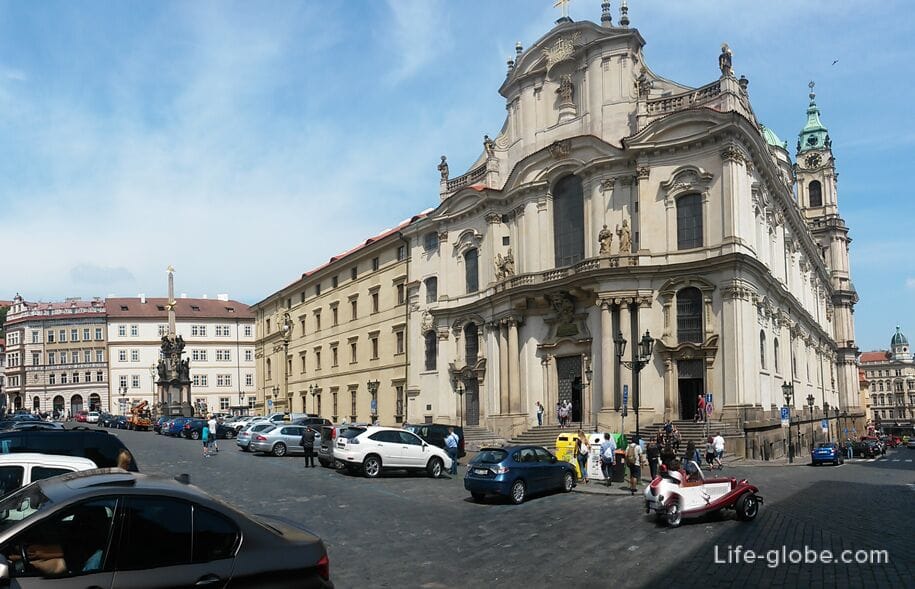
From Malostranskaya Square, the route goes up the beautiful Nerudova ulice Street, along which bright historical buildings rise in dense rows.

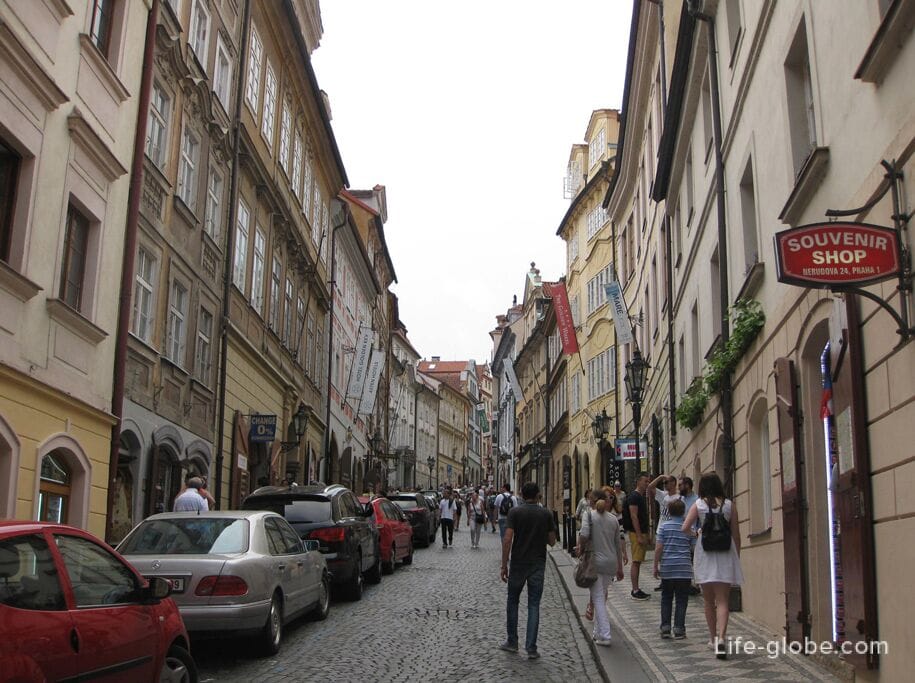

At the end of Nerudova Street (where it flows into Uvoz Street), the route turns sharply to the right onto Ke Hradu Street (ulicí Ke Hradu), which is a ramp of the Prague Castle Castle ("To the Castle" street) with beautiful views of Prague.
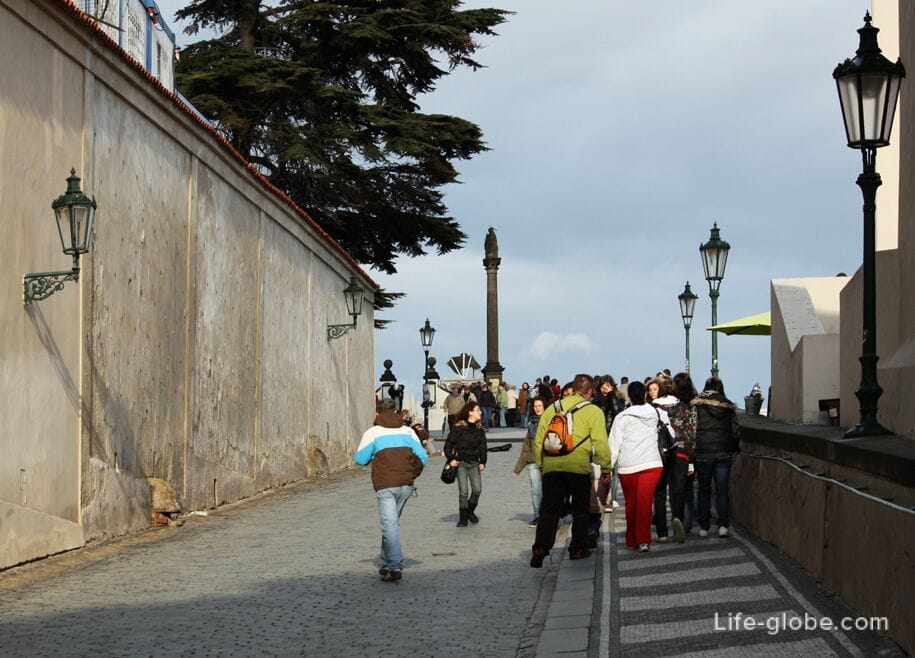
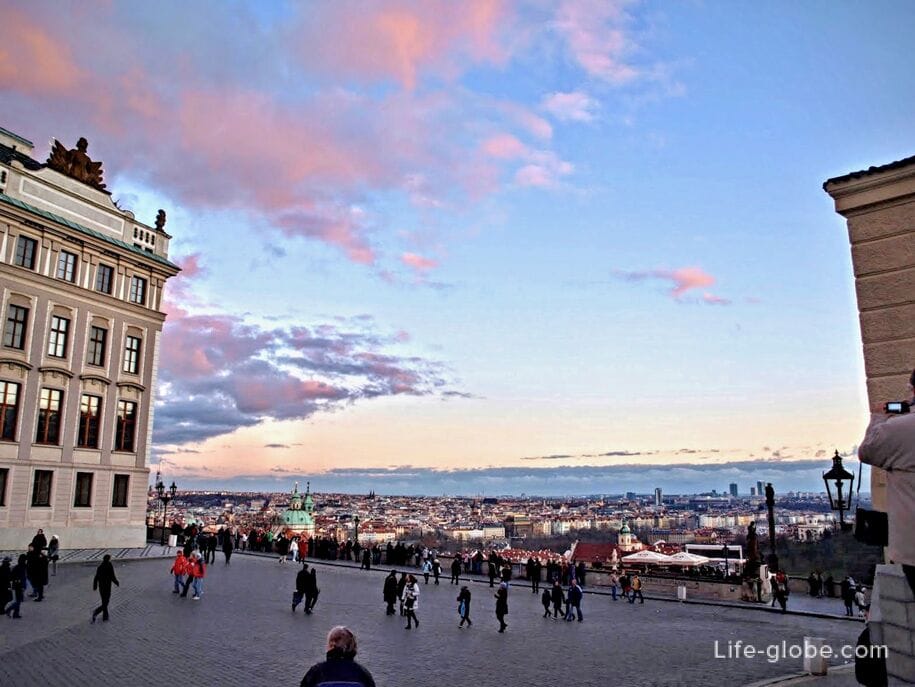
Remark! Earlier, until the 17th century, Ke Gradu Street did not exist, and the route from Nerudova Street led along Uvoz Street (Úvoz ulice), then through Pohořelec Square along Loretanskaya Street (Loretánská) and to Hradcanska Square (Hradčanske naměstí).
Today, you can take the route "up to the 17th century" and instead of the ramp street to the City, walk along Uvoz Street, Pogorzhelets Square, Loretanskaya Street and Hradchanskaya Square. At the same time, you can grab a beautiful historical object for inspection Strahovsky Monastery (Strahovsky klašter) with a library, gallery, basilica, brewery and panoramic Sami.
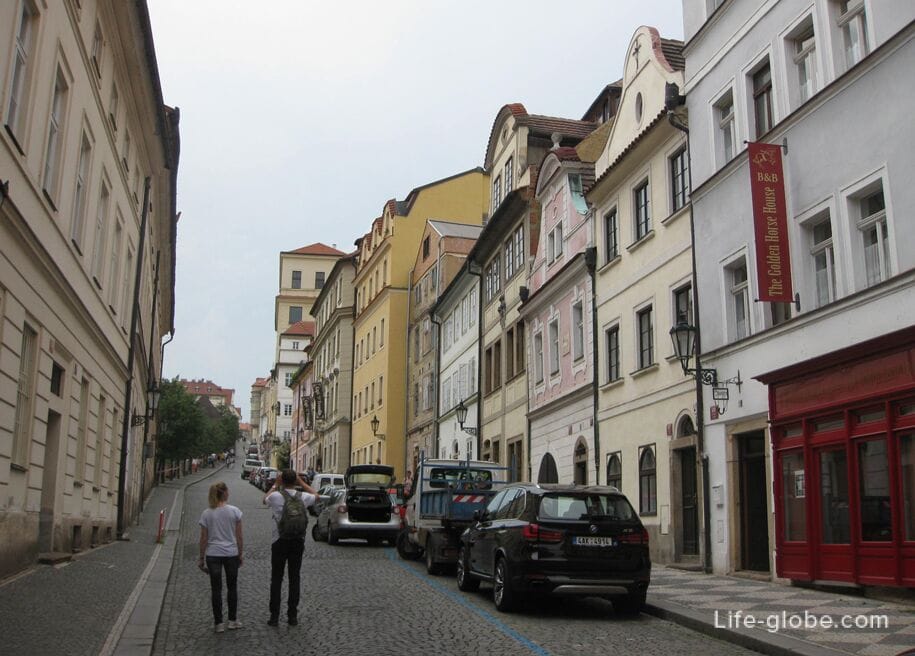


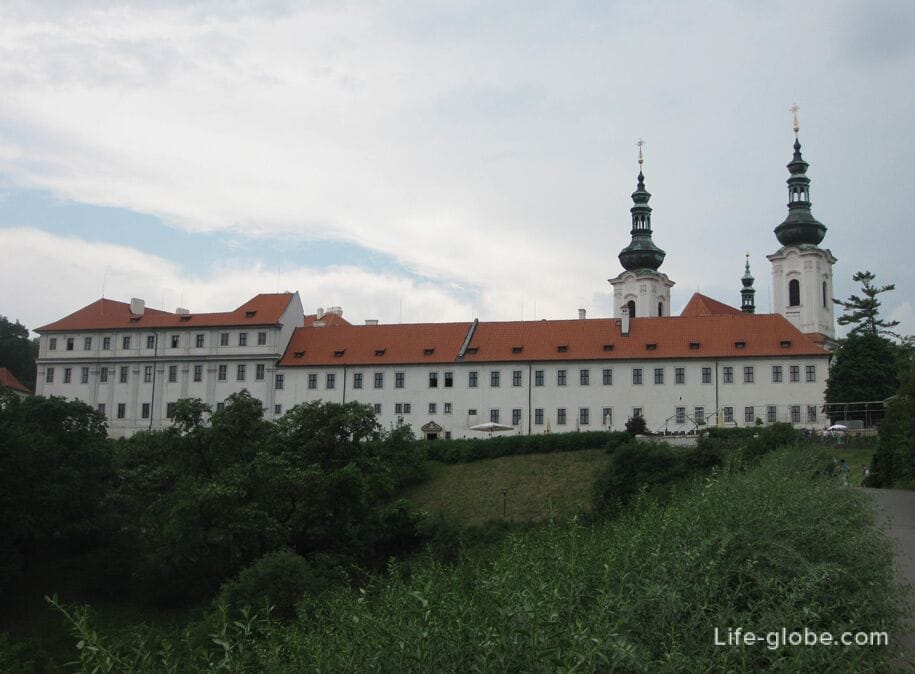
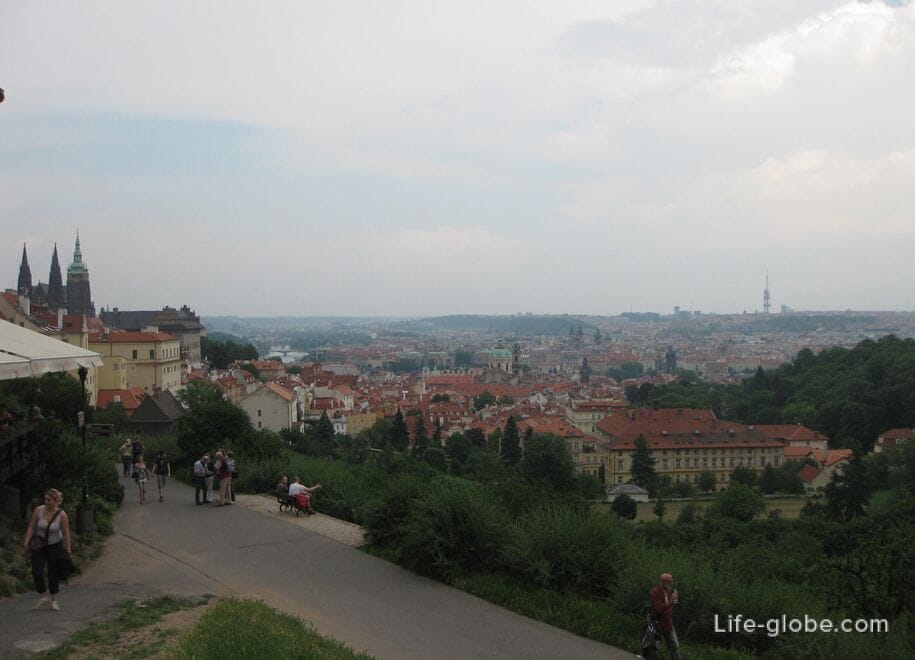
From Hradcany Square through the monumental front gate, called the Gate of Giants or the Gate of Titans (Brána gigantów), the path leads to the territory of Prague Castle (Pražsky hrad) and to the Cathedral of St. Vitus (Katedrala St. Víta) in Prague Castle.
Prague Castle is a majestic symbol and pearl of the Czech Republic, which is one of the largest castle complexes in the world, founded back in the 9th century.
Prague Castle is a complex consisting of four courtyards, the main street, former palaces, auxiliary and residential buildings, a basilica, a picturesque Golden Lane and the dominant of Prague Castle - St. Vitus Cathedral with a high tower, in which there is an observation deck. The complex is surrounded by former fortifications - walls with towers and gates, which are adjacent to gardens with some buildings. Learn more about Prague Castle and Gardens...


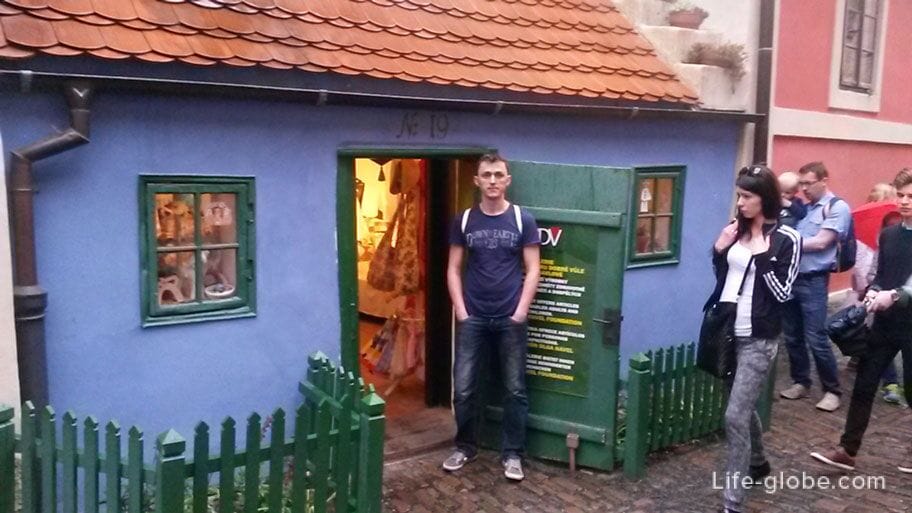
All accommodation facilities in Prague (hotels, apartments, guest houses, etc.), including in the historical center of the city and more remotely from it, can be viewed and booked here